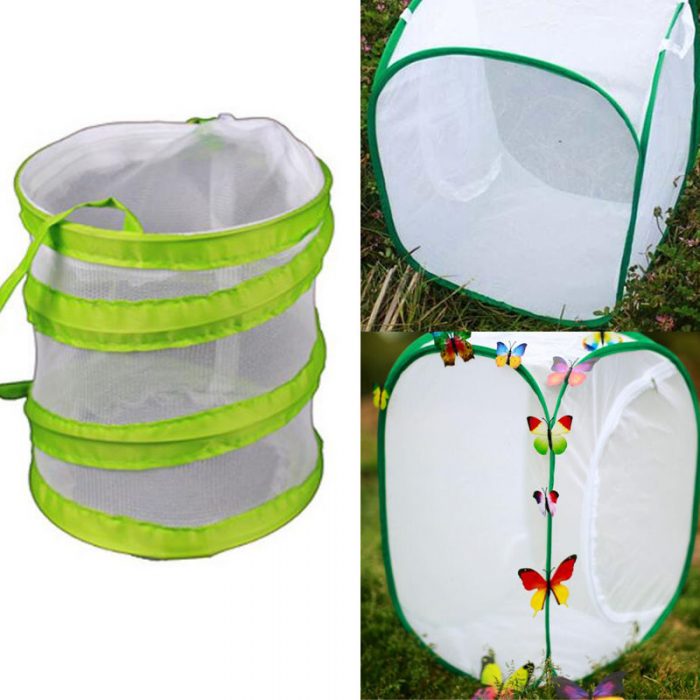I always get asked the question, what is the best enclosure to keep a praying mantis in? And the answer is – there isn’t really a size that fits all!
Enclosure, tank, cage or terrarium?
There are a lot of names for what to house your praying mantis in, and all are slightly different. A terrarium is generally a glass houses, tropical setup with high humidity, often littered with plants and soil. A cage more refers to, as the name suggests, a cage like enclosure, which is likely not going to be great for keeping in live pray should the holes be to wide. And a tank normally refers to a glass enclosure, something like you’d keep fish in.
The type of enclosure for any mantis is one with great ventilation. Ventilation provides natural air flow which the praying mantis would experience in the wild, allowing any stagnant air and water vapour to escape from the enclosure. A setup with very little ventilation will likely attract mould and infection – which you want to stay away from.
Terrariums and tanks can both be modified to provide higher levels of ventilation by using mesh lids, or mesh doors.
What’s more, depending on the size and species of your mantis will depend on the type of enclosure it needs.
Can praying mantis be kept communally?
Certain species of praying mantis can be kept communally from nymphs, but the majority cannot, otherwise they will cannibalise. The only family of mantids I have had luck with housing together is Empusidae, and that doesn’t include all species. Gongylus gongylodes (Violin/Indian rose mantis), Idolomorpha sp and Empusa sp I have all kept communally with few problems, ensuring they are all well fed.
I have read mentions of both Idolomantis diabolica (Giant devils flower mantis) and Phyllocrania paradoxa (Ghost mantis) being kept communally, but in my personal experience I have witnessed cannibalism with both of these species.
As a general rule of thumb, well fed hatchlings can be house communally if well fed, but anything from L3 onwards I would advise separating out, unless you want the numbers to gradually diminish.
Housing praying mantis nymphs
For larger hatches of 25 or more, I typically house hatchling praying mantis nymphs together for both ease, and from a space perspective (having 100 separate pots each with a nymph in isn’t really practical). The type of enclosure I normally use is a net cage, such as this one:
These are ideal because they are fully ventilated on all sides, perfect for both air flow and for spraying, and are fine enough to stop fruit flies from escaping through the mesh. They have an easy access zip as well allowing you to open them fully, or just a little.



